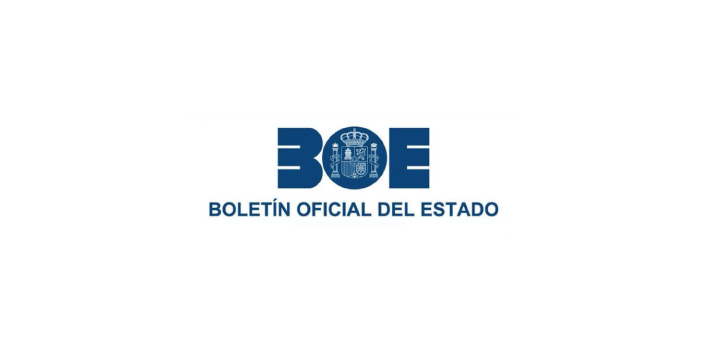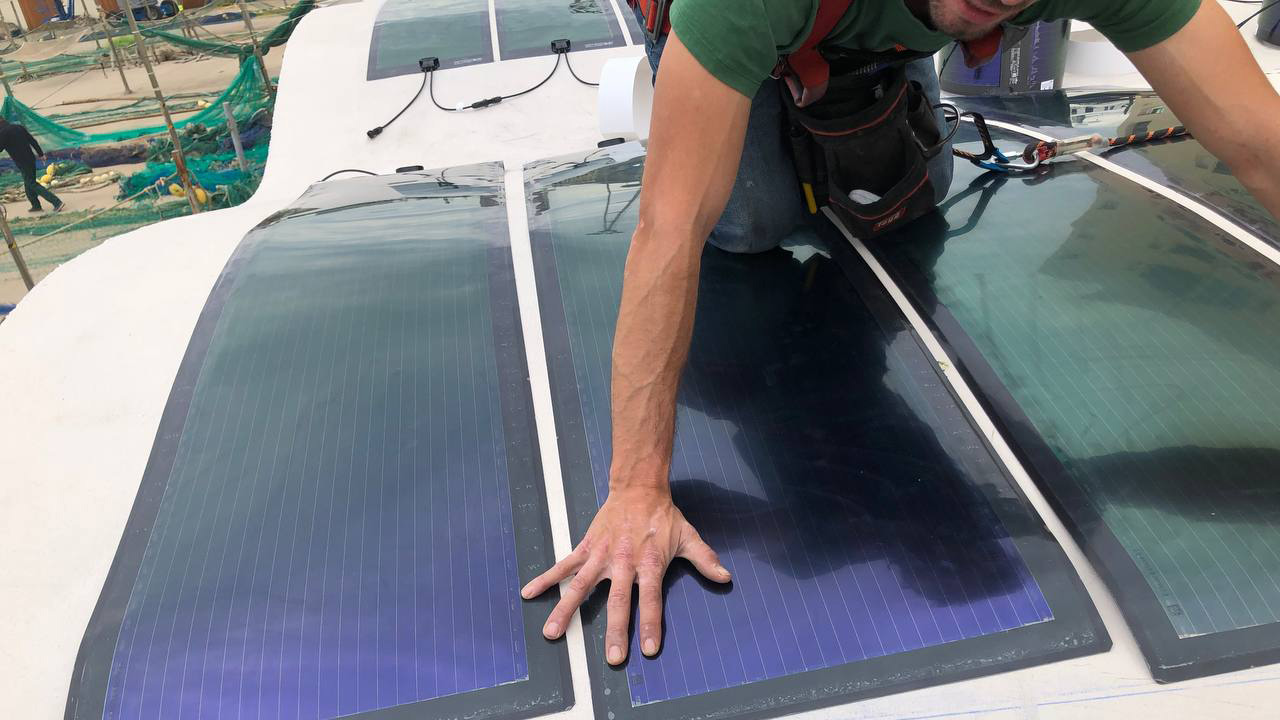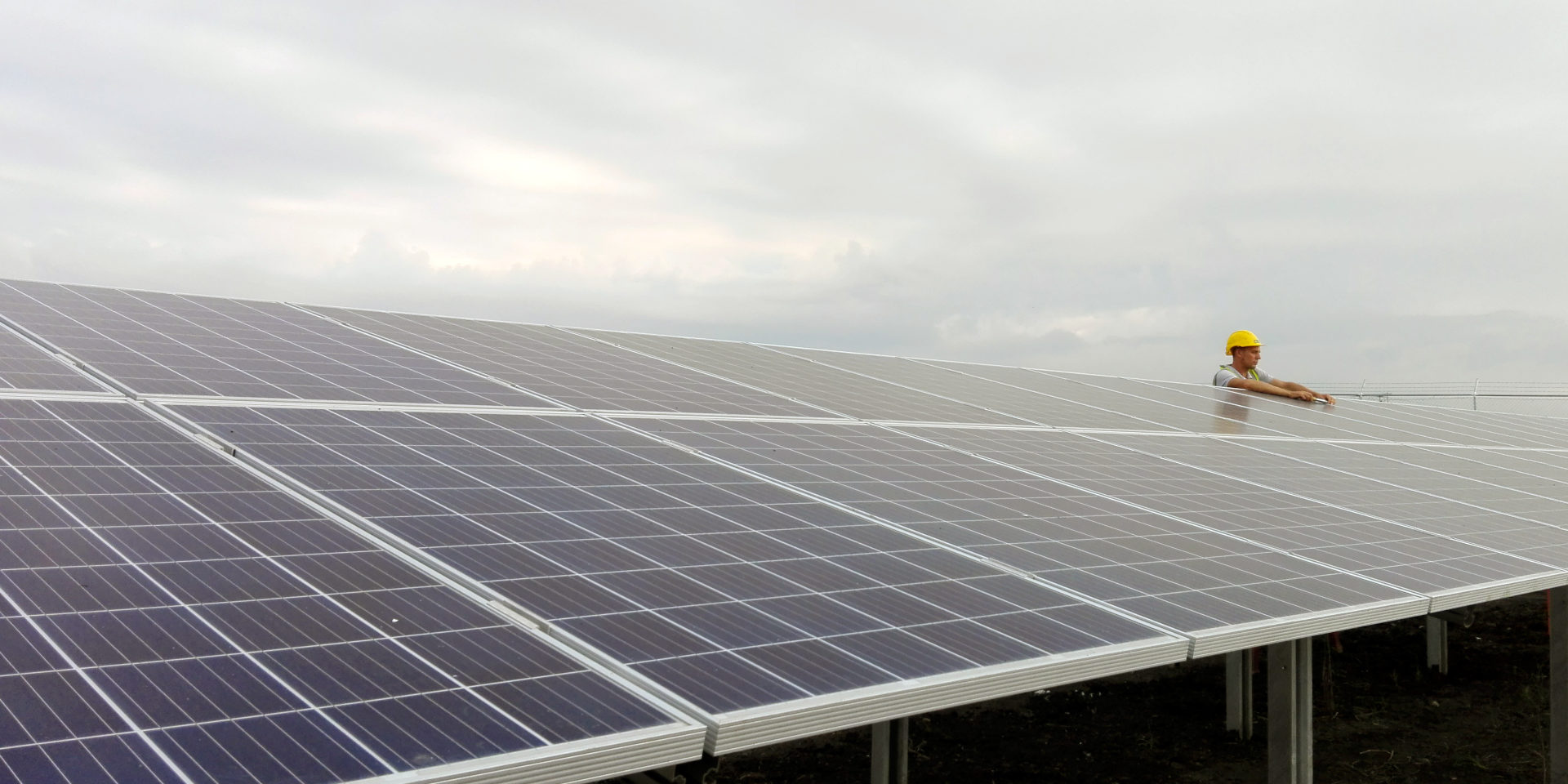Key Challenges of Photovoltaics: Causes, Impact, and Prevention
Key Challenges of Photovoltaics: Causes, Impact, and Prevention

When a photovoltaic installation operates optimally, ensuring a safe and reliable electricity supply, it can become a large-scale power source. However, photovoltaic technology faces major daily challenges in terms of quality, installation, operation, and decommissioning. Below, we describe five main challenges facing photovoltaic technology:
Derating
What is Derating?
Derating refers to the power reduction in photovoltaic inverters caused by environmental factors such as heat, altitude, and voltage. In extreme situations, this phenomenon can even stop production. This effect is especially noticeable in areas with high temperatures.
Causes of Derating
The main causes of derating are:
- Temperature: When inverters generate heat while converting direct current (DC) into alternating current (AC) and the ambient temperature is high, the inverters reduce their power to protect internal components.
- Altitude: At high altitudes, the low air density facilitates ionization at high voltages, affecting inverter performance.
- DC voltage: Maintaining the proper operating voltage range is essential to avoid derating.
How to Prevent Derating
To avoid it, several actions can be taken:
- Proper installation: Follow the manufacturer’s recommendations for ventilation and avoid direct sun exposure.
- Quality of equipment: Choose high-quality inverters with efficient ventilation systems, either by convection or forced ventilation.
- Regular monitoring: Conduct periodic inspections to ensure optimal performance.
LID Effect (Light-Induced Degradation)
What is the LID Effect?
The LID effect refers to the degradation of photovoltaic modules caused by chemical reactions in silicon cells, leading to a loss of power and efficiency during the first months of solar exposure. This can result in a reduction of up to 10% of the initial power.
Causes of the LID Effect
The main cause of this effect is the reaction of boron with elements such as oxygen, iron, or copper present in the silicon cell. While boron is crucial for generating electricity, these reactions reduce electron flow, affecting the module’s efficiency.
Monocrystalline P-type modules are especially vulnerable to LID due to the difficulty in completely eliminating oxygen during the manufacturing process. In contrast, N-type cells, doped with phosphorus, show greater resistance to this effect.
How to Prevent the LID Effect?
- Applying high temperatures and currents.
- Using advanced technologies such as lasers or LEDs.
- Eliminating oxygen within the cell, though this is costly.
- Replacing boron with gallium.
Hotspot
What is a Hotspot?
A hotspot is a localized area within a photovoltaic module that overheats, potentially damaging the module or, in extreme cases, causing a fire. This issue arises from high resistance in a specific area, turning it into an electricity consumer that generates heat, exceeding 200°C.
Causes of Hotspots in Photovoltaic Modules
Hotspots can be caused by internal defects, shading, broken solder joints due to poor manufacturing, or improper handling. Other factors include accumulated dirt and permanent obstacles like trees or chimneys.
Prevention of Hotspots
- Choose materials from recognized brands with certified manufacturing processes.
- Ensure proper transportation of the modules.
- Follow the manufacturer’s instructions during installation.
- Regularly clean the modules according to site conditions.
- Conduct periodic inspections with specialized equipment.
Delamination
What is Delamination?
Delamination refers to the loss of adhesion between the different layers that make up a photovoltaic module. This defect can appear shortly after installation but may worsen over the module’s lifetime.
Causes of Delamination in a Photovoltaic Module
Delamination is usually associated with poor manufacturing or the use of low-quality materials. Additionally, improper transportation and handling during installation increase the likelihood of delamination. Environmental factors such as temperature, humidity, and UV radiation accelerate this process, especially in lower-quality modules.
Detection and Prevention of Delamination
Delamination can be identified through visual inspection, observing color changes in the module, white spots on the front, or bubbles on the back.
How to Prevent Delamination?
- Purchase materials from trusted brands with certified manufacturing processes.
- Ensure proper transportation, keeping the modules palletized and free from additional weight.
- Handle the modules carefully during installation, following the manufacturer’s recommendations.
- Periodically inspect the plant, performing visual checks and using specialized equipment at least once a year.
How Does Delamination Affect Photovoltaic Modules?
When delamination occurs away from the module’s edge, it can affect performance without posing an immediate safety risk. However, if delamination spreads to the edges, it can allow air and moisture to enter, leading to corrosion and irreversible deterioration of the module, which puts the plant’s integrity at risk.
LeTID Effect (Light and Elevated Temperature Induced Degradation)
What is the LeTID Effect?
The LeTID effect is a phenomenon that affects photovoltaic modules, particularly those using PERC cells. Discovered in 2012, it causes a power loss due to sunlight exposure, similar to LID, but occurs at operating temperatures above 50°C, whereas LID occurs at lower temperatures.
Causes of the LeTID Effect and How It Is Detected
Research points to hydrogen as the main culprit. During the cell manufacturing process, hydrogen atoms diffuse from other layers into the active area of the cell. High temperatures in the manufacturing process increase this diffusion, raising the risk of LeTID.
This issue is not visible to the naked eye, as LeTID is detected through an abnormal drop in panel performance. To confirm it, after ruling out other defects such as hotspots or delamination, electroluminescence equipment is used, just like with LID.
Preventing the LeTID Effect
Manufacturers and laboratories are working to better understand and mitigate the effects of LeTID. Some preventive measures in the manufacturing of PERC cells include:
- Using materials with low hydrogen content.
- Reducing temperatures during cell treatment.
- Using thinner wafers.
What You Need to Know
To prevent the effects of LID, hotspots, delamination, LeTID, or derating, it is crucial to carefully select both materials and manufacturers, optimize wafer treatment processes, and apply proper practices in transportation, installation, and maintenance of photovoltaic modules. Preventing and detecting these defects not only ensures greater efficiency and a longer lifespan for installations, but also provides significant long-term economic benefits.
In conclusion, the photovoltaic industry faces complex challenges that affect the durability and performance of installations. However, by using high-quality materials, applying advanced technologies, and ensuring proper maintenance, it is possible to mitigate these issues and ensure that installations operate optimally. At Azimut360, we work to provide comprehensive, tailored solutions for preventing and detecting these defects, ensuring that our clients’ photovoltaic installations not only maximize their efficiency but also extend their lifespan, generating sustainable economic benefits in the long term.
Flexible solar panels make better use of space
Flexible solar panels make better use of space. An innovative installation at the Moll de pescadors in the Port of Barcelona.
A few weeks ago, one of the most innovative photovoltaic installations in the city was presented at the Port of Barcelona. The installation carried out on the Moll de Pescadors is part of the LIVE BIVP (Building-integrated Photovoltaics) project coordinated by COMSA and co-financed by the European LIFE programme.
29.5kWp have been installed with the aim of demonstrating solutions to integrate photovoltaic modules in buildings with complex roofs and promote the generation of clean energy in all types of structures and buildings.
Our installers have assembled 584 solar panels with peculiar characteristics: they are made of a lightweight, flexible organic material that is easy to install. These innovative solar panels have been developed by the German company Heliatek and it is estimated that, by the end of the year, they will produce 43.4 MWh of electricity.
The solar panels used in this project are substantially different from the panels commonly used in photovoltaic installations. Heliasol is the prototype that the German company is working on and it is a model of flexible solar panel with adhesive layer on its back.
In this way, the materials used for manufacturing, as well as their lightness, allow users to reduce the amounts of materials required for assembly.
The technology of flexible panel without a rigid frame, allows them to adhere directly to the roof without the need for the entire structure that would typically be required. In addition, it allows you to adapt to different types of structure. In the case of the Moll de Pesacadors project, the roof has an oval shape, which makes this panel model better suited than a usual rigid crystalline silicon panel with a rigid aluminium frame.
In addition, although a regular panel with its life cycle analysis usually involves an emission of gases of around 40 or 50gCO2 equivalent for each kWh generated, the flexible panels installed their emissions fall below 10gCO2. The organic materials used for their manufacture, and not using elements of the so-called rare earths, mean a reduction in the environmental impact of this technology.
However, the cell itself has an efficiency of around 7%, unlike the commonly installed monocrystalline silicon panels that are around 20%. Despite the current limitations, it is a technology that over the years will improve efficiency and provide multiple uses.
New IDAE Self-consumption Procedural Guide
New IDAE Self-consumption Procedural Guide.
https://www.idae.es/publicaciones/info-idae-060-guia-de-tramitacion-del-autoconsumo
Es completa la Llei d’Autoconsum
Es completa la Llei d’Autoconsum.

El RD 244/2019, de 5 d’abril i pel qual es regulen les condicions de l’Autoconsum, completa la Llei d’Autoconsum del passat octubre de 2018
El nou Reial Decret completa el marc regulador de l’Autoconsum fixant les condicions tècniques econòmiques i administratives només esbossades en l’anterior llei, el RD 15/2018. Cal destacar tres novetats principals: la regulació dels conceptes d’autoconsum col·lectiu, la simplificació dels registres administratius i la fixació d’un sistema de compensació.
La reducció dels tràmits administratius i la simplificació del procés de registre aplica a instal·lacions renovables de fins a 15 kW en el cas que hi siguin autoconsum amb excedents, o fins a 100 kW, si no en tenen. Comporta la unificació de totes les gestions en una de sola: la notificació de la instal·lació de la petita planta de producció a l’autoritat competent. Per altra banda, amb la nova llei passa a ser el distribuïdor d’energia elèctrica aquell qui ha de modificar el contracte d’accés del seu client, que tan sols haurà de facilitar el seu consentiment. Per últim, se simplifiquen de manera considerable la configuració dels sistemes de mesura, de manera que en la major part de les instal·lacions és suficient l’ús d’un sol comptador frontera amb la xarxa de distribució.
Cal destacar també la regulació de la figura de l’autoconsum col·lectiu, fins ara inexistent. Abans d’aquesta llei només era possible l’autoconsum individual connectat a la xarxa interna, però ara ja es contempla que diversos consumidors comparteixin la mateixa planta de generació. Aquest pot ser el cas de comunitats de veïns o grups d’empreses en una mateixa zona industrial. Com a punt extra, ja es permeten les instal·lacions de producció pròximes a consum, no necessàriament ubicades al mateix edifici propietat del consumidor o del grup de consumidors.
Malgrat els canvis ja esmentats, el punt més esperat de la llei és sens dubte la introducció d’un sistema de compensació simplificat. S’aconsegueix afegint la modalitat d’autoconsum amb excedents acollida a compensació i suposa una novetat molt esperada pel sector, ja que possibilita que productor-consumidor faci un balanç d’energia mensual entre l’energia que importa de la xarxa a través companyia distribuïdora i la que produeix en règim d’autoconsum. L’energia sobrant del sistema no s’aboca a la xarxa gratuïtament, sinó que té un efecte de descompte en la factura elèctrica mes a mes. Això incrementa la rendibilitat de projectes d’instal·lacions renovables, entre altres, instal·lacions amb plaques fotovoltaiques.
Per més informació, podeu utilitzar la següent drecera al Reial Decret complet:

